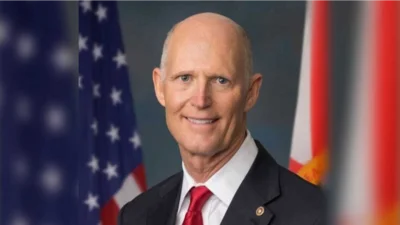WASHINGTON, DC - The Subcommittee on Environment and the Economy, chaired by Rep. John Shimkus (R-IL), today continued its examination of the Toxic Substances Control Act (TSCA), focusing on section 6 requirements related to the manufacture and processing of existing chemicals and section 18, regarding federal pre-emption of state law. Today’s hearing built on the subcommittee’s two previous hearing’s on the statute. The first was an overview of Title I of TSCA, and the second focused on the regulation of new chemicals and the protection of confidential business information.
“These two sections of TSCA have been subject to a great deal of discussion. Notwithstanding the testimony of three of our witnesses at the July 11 hearing that TSCA section 5 is doing a fine job reviewing and, if necessary, limiting the use of new chemicals, some argue that TSCA is broken because TSCA section 6 has not produced more bans or other limits on chemicals. Others, including some on our panel today, suggest that concern is overstated," said Chairman Shimkus. “Understanding section 6 and its link to the pre-emption provisions in TSCA section 18 is also important. If EPA has taken action to test a chemical or regulate a new or existing chemical in commerce, TSCA forecloses state action unless the state or locality meets one of four criteria. In many areas the states should handle local pollution issues, because they have a wealth of experience and capability to do so. But chemical regulation is not an area where states have traditionally taken a lead role because of the impacts on interstate commerce."
TSCA section 6 gives EPA the authority to regulate chemical substances or mixtures when the agency believes there is an “unreasonable risk of injury to health or the environment," and requires that the control measures taken by EPA must be “to the extent necessary to protect against such risk using the least burdensome requirements."
William Rawson, a Partner Latham & Watkins, who has written leading treatises on TSCA, expressed the need to preserve the law’s risk-based approach, stating, “Changes to section 6 should not simply make it easier for EPA to ban the use of chemicals, but should support sound regulatory decisions that meet all the objectives of the statute. Decisions made under TSCA should be governed by the same principles that govern other environmental statutes, and fundamentally should remain risk-based."
Section 18 of the law provides for federal pre-emption of state or local laws regarding the regulation of chemicals. The current law permits states and localities to regulate chemical substance and mixtures to address risks that EPA has not addressed, but where EPA has taken action, the authority of states to promulgate rules to address the same risks is limited. Currently, several state and local laws exist that are not subject to TSCA’s current preemption standards.
Justin Johnson, Deputy Secretary of the Vermont Agency for Natural Resources testifying on behalf of the Environmental Council of the States, expressed the need for strong pre-emption standards to avoid conflicting regulations. He said, “States don’t want to lose the ability to act to restrict a chemical in order to prevent harm to the public or the environment. States can agree, however, that a state requirement that makes it impossible for the manufacturer to comply with both state and federal rules should result in the federal rule taking precedence."
Jennifer Thomas, Director of Federal Government Affairs with the Alliance of Automobile Manufacturers, noted that the existing law contains a patchwork of oversight over chemical substances resulting in a burdensome regulatory system, stating, “A single federal chemical management program could accomplish the goal of properly managing hazardous materials in products while also creating a more predictable regulatory environment by eliminating conflicts and inconsistencies that make compliance unnecessarily burdensome and costly for both the private and public sectors."
Full Committee Chairman Rep. Fred Upton (R-MI) concluded, “Let’s ensure that the national government’s scrutiny of chemicals and the products they go into is objective and thorough, and that any necessary restrictions are in place. But let’s also avoid excess regulation. That way, the states can be confident that they don’t have to reinvent the wheel and shoulder this regulatory responsibility one by one. Finding this balance, and understanding what’s at stake, is our purpose today in this ongoing effort."




